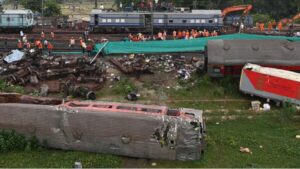Indian Railways, a crucial component of India’s transportation infrastructure, operates over 1.3 lakh kilometers of track, connecting 7,335 stations and serving approximately 23 million passengers daily. Despite its significance, the railway network has faced numerous safety challenges, highlighted by tragic incidents such as the 1995 Firozabad disaster, which resulted in 358 fatalities, as well as other catastrophic collisions in subsequent years.
The repeated occurrence of railway accidents underscored the urgent need for enhanced safety measures. Although Indian Railways is among the largest railway networks globally, it took over 70 years after independence to implement Automatic Train Protection (ATP) technology. The introduction of Kavach, meaning “shield” in Hindi, marks a significant turning point in this endeavor. This advanced, indigenously developed ATP system is designed to act as a protective shield for trains.
Development and Features of Kavach
Kavach was developed by the Research Design and Standards Organisation (RDSO) in partnership with Indian firms such as HBL Power Systems, Kernex, and Medha. The system is designed to monitor train speeds, alert operators to potential dangers, and automatically stop trains when necessary, ensuring smooth operations even during adverse weather conditions.
The introduction of Kavach has had a transformative effect on Indian Railways, with consequential accidents plummeting from 473 in 2000-01 to just 40 in 2023-24. This sharp decline is attributed to the government’s ongoing commitment to railway safety, exemplified by the Rashtriya Rail Sanraksha Kosh, a ₹1 lakh crore safety fund launched in 2017. In 2023, the fund was extended by an additional ₹45,000 crore over five years, further emphasizing the government’s dedication to improving rail safety.
Kavach’s journey began with field trials in 2016, achieving the highest safety certification (SIL4) in 2019, and was officially approved as the national ATP solution for Indian Railways in 2020. Despite challenges posed by the COVID-19 pandemic, Indian Railways has pressed on with Kavach’s implementation, aiming to deploy the system across 44,000 kilometers of track within the next five years.
As of now, over 301 locomotives have been equipped with the Kavach system, and 273 stations have been fitted with the technology. The initiative aims to eliminate fatalities caused by human error, a leading cause of train accidents. However, recent tragedies, such as the triple-train collision in Odisha in June 2023, have sparked renewed discussions about railway safety.
Infrastructure Upgrades and Challenges
Implementing Kavach across India’s extensive railway network is a monumental task that requires significant upgrades, including 100% electrification of tracks and the installation of optical fiber for communication. Currently, more than 4,000 kilometers of optical fiber have been laid, and 356 communication towers have been erected to support the system’s infrastructure.
Conclusion: A Symbol of Modernization and Safety
Kavach represents more than just a technological achievement; it embodies India’s commitment to modernizing its railways and safeguarding the lives of millions of passengers. Over the past nine years, Indian Railways has invested over ₹1,78,012 crore in safety enhancements, facilitating the installation of advanced trackside equipment and comprehensive personnel training. As Kavach continues to be implemented, the future of rail safety in India appears promising, standing as a beacon of hope for a safer, more secure railway network.














